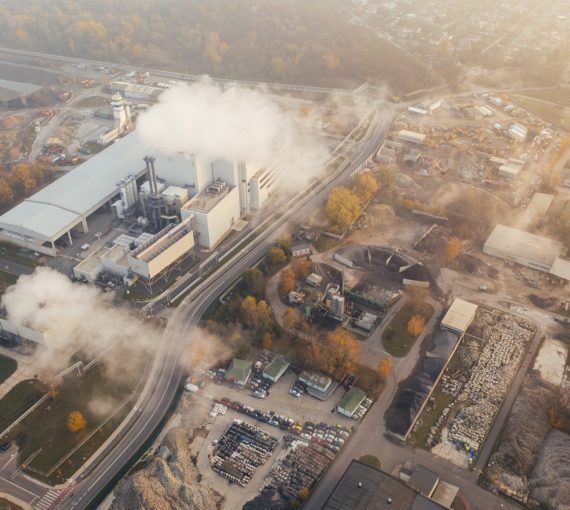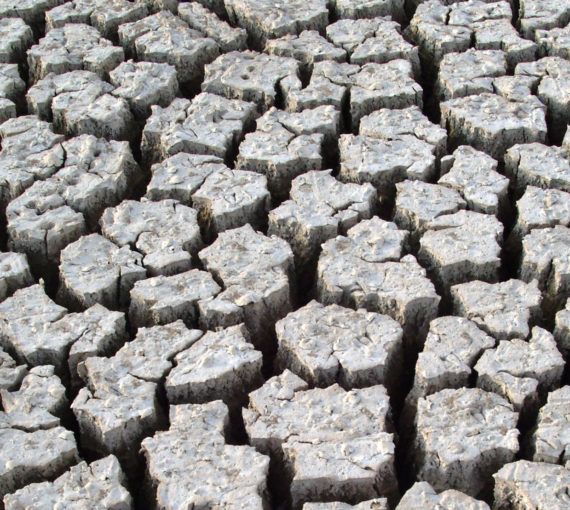
Carbon pricing isn’t the only way to combat accelerating climate change, but it’s one of the most effective and least expensive in a market system.
Pricing carbon emissions through a carbon tax is one of the most powerful incentives that governments have to encourage companies and households to pollute less by investing in cleaner technologies and adopting greener practices.
Unfortunately, carbon pricing in Canada is subject to misconceptions. Here we answer several common questions about carbon prices, how they work, their benefits and their economic impacts.
What is a carbon tax?
A carbon price, often incorrectly referred to as a carbon tax, is a charge placed on greenhouse gas pollution mainly from burning fossil fuels. It can be applied by placing a surcharge on carbon-based fuels and other sources of pollution such as those from industry.
Greenhouse gases emissions cause global heating. As the climate crisis worsens, creating devastating consequences for health and infrastructure, its impacts impose real costs on our economy, communities and planet. A carbon price is a dollar amount put on these costs. The cost of the carbon price encourages households, businesses and industry to shift to cleaner technologies and increases demand for energy-efficient products, innovation and investment in green solutions such as solar and wind power.
The spring 2025 federal election can have a big influence on how Canada addresses carbon pollution.
Join us in calling on all party leaders to uphold the environmental and social justice values that unite us.
Make Election 2025 count for people and the planet
How does Canada’s carbon tax work?
Provinces and territories must meet certain minimal national standards when choosing the pricing system that best fits their situation. If they fail to meet those standards, the federal government will ensure they follow the national standard.
Most jurisdictions in Canada price carbon pollution through a levy, which is not designed to raise revenue for government, and through industrial pricing. (Quebec uses a federally approved cap-and-trade system.)
For consumers:
Carbon pricing increases costs of burning polluting fossil fuels and encourages cleaner alternatives. Effective carbon levies rise regularly to give people and businesses time to adjust. Canada’s carbon levy started in 2019 at C$20 per tonne and went up by $10 a year to $50 in 2022. It’s now increasing by $15 a year until 2030, when it will reach $170 per tonne. The most recent increase in April 2024 to C$80 per tonne adds only about three cents to a litre of gasoline — far less than profit-driven price hikes imposed by industry.
Consumers pay the price on fossil fuel purchases based on the amount of greenhouse gases created when the fuel is burned. For example, the price on a litre of diesel is higher than on gasoline because diesel produces more carbon.
For large industries:
Large industrial polluters follow separate pricing systems, which vary by province. They help drive down emissions while keeping companies globally competitive.
Industry pollutes more than individuals. While much media focus has been on the consumer side of carbon pricing, the system in place for large emitting industries (such as steel) is projected to play a larger role in reducing emissions than the consumer levy or fuel charge, by covering a higher share of Canada’s emissions. The Canadian Climate Institute projects that industrial carbon-pricing systems will be the single biggest driver of emissions reductions in 2030.
The system for large industrial emitters is designed to protect the competitiveness of Canadian companies and to ensure that firms can meet growing demand for products that have a lower climate footprint.
Do farmers pay a carbon tax?
The federal fuel charge doesn’t apply to gasoline or diesel fuels used by farmers for agricultural purposes. There is little effect on farmer’s costs. Farmers get 80 per cent of the levy back for fuel used to heat greenhouses. Fuel used to heat buildings or dry grain is taxed. There is support from the federal government to make grain dryers more efficient. Heat pumps powered by electricity can be used to heat farm buildings.
Who gets carbon tax rebates? How much?
Most people in Canada get money back. The federal government returns about 90 per cent of the money it collects to families through “Canada Carbon Rebate” payments — mailed or deposited four times a year. Rebates are based on family size. Around 80 per cent of households get more back than they spend on the levy. Rural residents receive an additional 20 per cent rebate. This helps address economic hardships for lower-income households.
The remaining 10 per cent is “returned to businesses, farmers and Indigenous groups in the same province or territory where it was collected” to help them reduce emissions.
British Columbia and the Northwest Territories have their own plans that meet the federal standard, offering similar rebates or offset payments. B.C.’s rebates are income-based.
Quebec’s federally approved cap-and-trade system reinvests revenues in the fight against climate change.
What are the benefits of carbon pricing?
1. It works to reduce emissions
As carbon levies increase over time, emissions drop to cost-effectively address climate change.
A peer-reviewed study in Nature found “that if all countries adopt the necessary uniform global carbon tax and then return the revenues to their citizens on an equal per capita basis, it will be possible to meet a 2°C target while also increasing wellbeing, reducing inequality and alleviating poverty.”
2. It speeds up the transition to renewable energy
The world is transitioning to clean, renewable energy as a response to the climate crisis and energy insecurity. Policies such as carbon pricing speed up this transition.
A carbon levy sends a price signal to companies and consumers to move away from polluting, climate-damaging activities. It encourages investments in technologies such as electric vehicles and heat pumps, making them more available and lowering their prices.
3. It supports good jobs
Scientific reviews of pricing carbon in British Columbia and the U.K. suggest that carbon pricing changes the kinds of jobs we do, not the total number of jobs.
Is carbon pricing effective?
Yes! And it’s growing in popularity around the world.
Many countries use a form of carbon pricing. As of 2023, there were 73 carbon-pricing systems operating worldwide, covering around 23 per cent of global greenhouse gas emissions.
B.C. is a good case study of how carbon pricing is working. B.C.’s provincial carbon pricing started in 2008 and is reported to have cut emissions between five and 10 per cent, and its effectiveness is projected to increase as the price ramps up.
Sweden has used carbon pricing since 1991. Although a suite of other policies has also been used, the Swedish Ministry of Environment estimated the carbon tax has cut emissions by an additional 20 per cent (as opposed to solely relying on regulations).
As carbon levies increase over many years, emissions drop to effectively address climate change.
Is carbon pricing responsible for inflation?
Canada, like many other countries, is facing a cost-of-living crisis. We’re spending more for groceries, gas, home heating and many other products. Although some opponents blame carbon pricing for rising living costs, carbon pricing is responsible for less than 1/20th of overall price increases. Prices for many key goods are affected to a far greater degree by other factors such as volatile fossil fuel markets, oil company and other corporate price gouging and supply chain bottlenecks.
The impacts of climate-related extreme weather events and pollution — from agriculture and infrastructure damage to health-care costs — are also increasingly affecting living costs.
Does every climate plan need carbon pricing?
Carbon pricing isn’t the only way to combat accelerating climate change, but it’s one of the most effective and least expensive in a market system. If carbon pricing is repealed, regulations that achieve the same effect will be needed, and they are likely to have a greater impact on costs. Lurching from one climate policy to another also increases business uncertainty, undermining investment and jobs.
What about cap-and-trade systems?
Cap-and-trade, which is used in Quebec, requires government to put a firm limit, or cap, on the overall level of carbon pollution from industry and reduces that cap year after year to reach a set pollution target. As the cap decreases each year, it cuts industry’s total greenhouse gas emissions to the limit set by regulation. Polluters that exceed their emissions quota must buy unused quota from other companies.
The government creates and distributes pollution quotas. This creates an incentive for firms to reduce their emissions and be able to sell rather than purchase pollution quotas. Similar to carbon pricing, cap-and-trade systems also put an indirect price on carbon across the economy, encouraging businesses and consumers to make more climate-friendly choices.



